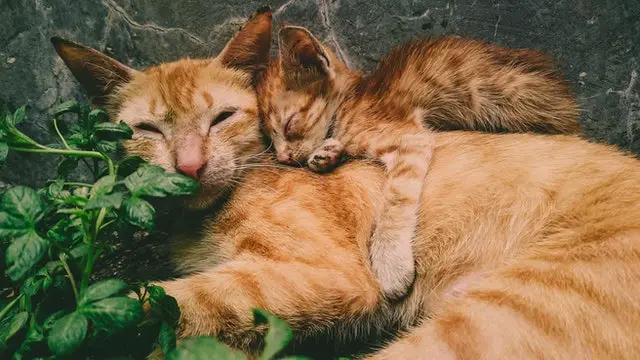
Natural or caesarean birth in the cat? It depends on the circumstances but it is advisable to know the risks and consequences of this surgical operation.
Does the joy of future kittens make us lose sight of the moment of birth? Yet it is a fundamental moment, which perhaps we do not know enough about. As for us humans, the caesarean section in the cat is an alternative to the natural one, usually when the conditions are not completely stable and rosy. So let’s see when it is necessary and how to proceed for an operation of this type.
The birth of the cat: an unforgettable moment
Although the thrill of welcoming puppies into the home is enormous even for owners who are rarely moved, the cat actually lives the moment in a very natural way. It also prepares for the happy event by choosing the quietest corners of the house to set up the den that will host the babies.
Once the kittens are expelled in a natural way, the cat takes care of them right away, licking them, cutting the umbilical cord and eating the placenta. It is likely that after taking care of the first puppy, she will be ready to give birth to the next one: it could also be an interval of about 30 minutes .
Like the big cats, it may happen that in the feline colonies some cat mothers also breastfeed kittens that are not theirs: this is due to the spirit of collaboration that exists between all the specimens of the same species. Furthermore, it can happen that the birth period coincides with that of many other cats (it seems to be always in late spring or autumn).
While feeding little ‘strangers’ with their milk, the mother recognizes her puppies by the smell of the fur, the coat, etc. The opposite can also happen, namely that the mother cat rejects her young: this is very common in the case of a caesarean section.
Caesarean delivery in the cat: when it is necessary

Usually a cat has no problem giving birth naturally, and certainly does not decide on her own whether to adopt one method or the other. Much depends on the circumstances that could convince the experienced vet to opt for a caesarean rather than the natural one.
It is chosen above all for the good of the puppies and to facilitate their birth; as this is a full-fledged surgical operation, in the event of a second pregnancy, the cat will have to undergo another caesarean section. Precisely for this reason many owners decide for the sterilization of the feline after a birth of this type. The doctor chooses this operation in case of:
- brachycephalics, i.e. cats with a flattened snout (for example the Persian),
- if the birth canal is very narrow,
- if the puppies are too big.
This does not mean that a brachycephalic cat will have to give birth only with a caesarean, but in principle this operation is chosen for prevention and for the good of both the mother and her kittens.
It is also necessary to opt for a caesarean in case of prolonged contractions but which do not lead to the expulsion of the kitten, or when in part they have gone out and some have remained inside or in case of mother’s dystocia, or a state of fatigue that prevents them. to continue giving birth. Such suffering to the cat could be avoided precisely with this cut in the abdomen that ‘frees’ her of the little ones who, otherwise, would not have been able to be born.
How to proceed in the case of a caesarean section
It is now an almost routine operation, so the risks involved during the operation are really low. We proceed under anesthesia and continue with a light pharmacological treatment precisely to facilitate the recovery of the mother.
Some contraindications of the drugs used post-partum, that is analgesic and anesthetic, are linked to their bad administration, with consequences also on the renal system of mother cat and her young.






